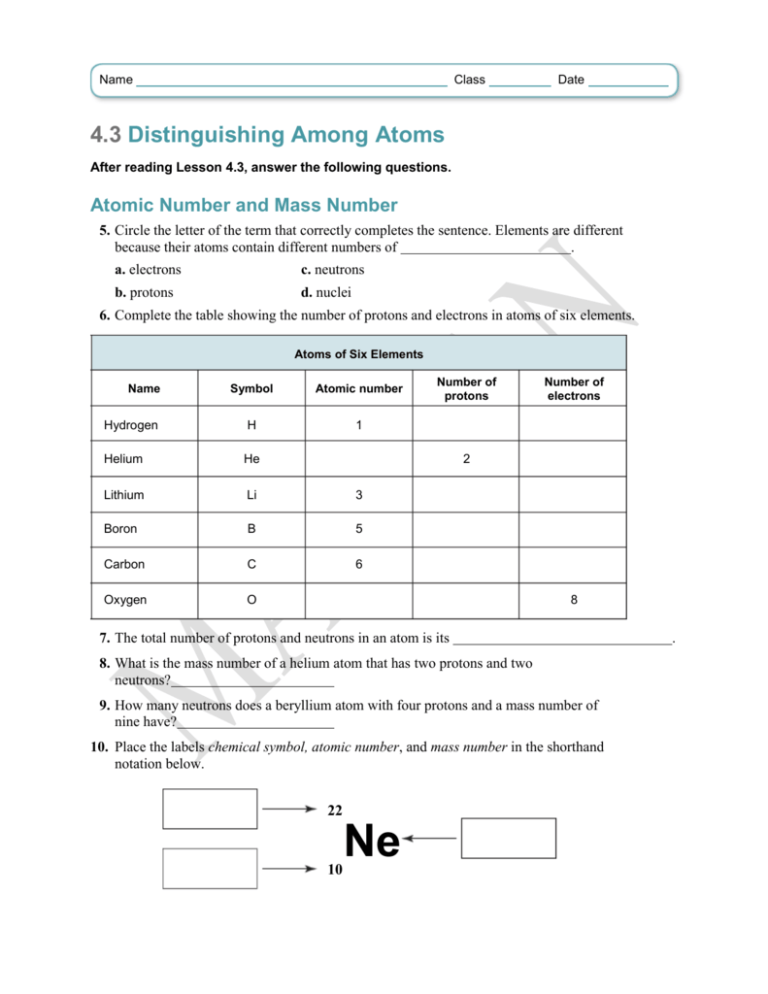4.3 Distinguishing Among Atoms
advertisement

Name Class Date 4.3 Distinguishing Among Atoms After reading Lesson 4.3, answer the following questions. Atomic Number and Mass Number 5. Circle the letter of the term that correctly completes the sentence. Elements are different because their atoms contain different numbers of . a. electrons c. neutrons b. protons d. nuclei 6. Complete the table showing the number of protons and electrons in atoms of six elements. Atoms of Six Elements Name Symbol Atomic number Hydrogen H 1 Helium He Lithium Li 3 Boron B 5 Carbon C 6 Oxygen O Number of protons Number of electrons 2 8 7. The total number of protons and neutrons in an atom is its 8. What is the mass number of a helium atom that has two protons and two neutrons? 9. How many neutrons does a beryllium atom with four protons and a mass number of nine have? 10. Place the labels chemical symbol, atomic number, and mass number in the shorthand notation below. 22 10 Ne . 11. Designate the atom shown in Question 10 in the form “name of element”-“mass number.” 12. How many protons, neutrons, and electrons are in the atom discussed in Questions 10 and 11? Protons: Neutrons: Electrons: Isotopes 13. How do atoms of neon-20 and neon-22 differ? 14. Neon-20 and neon-22 are called . 15. Is the following sentence true or false? Isotopes are chemically alike because they have identical numbers of protons and electrons. Match the designation of each hydrogen isotope with its commonly used name. 16. hydrogen-1 a. tritium 17. hydrogen-2 b. hydrogen 18. hydrogen-3 c. deuterium Atomic Mass 19. Why is the atomic mass unit (amu), rather than the gram, usually used to express atomic mass? 20. What isotope of carbon has been chosen as the reference isotope for atomic mass units? What is the defined atomic mass in amu of this isotope? 21. Is the following sentence true or false? The atomic mass of an element is always a whole number of atomic mass units. 22. Circle the letter of each statement that is true about the average atomic mass of an element and the relative abundance of its isotopes. a. In nature, most elements occur as a mixture of two or more isotopes. b. Isotopes of an element do not have a specific natural percent abundance. c. The average atomic mass of an element is usually closest to that of the isotope with the highest natural abundance. d. Because hydrogen has three isotopes with atomic masses of about 1 amu, 2 amu, and 3 amu, respectively, the average atomic mass of natural hydrogen is 2 amu. 23. Circle the letter of the correct answer. When chlorine occurs in nature, there are three atoms of chlorine-35 for every one atom of chlorine-37. Which atomic mass number is closer to the average atomic mass of chlorine? a. 35 amu b. 37 amu







